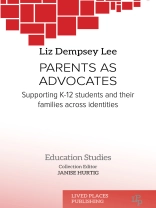How can students, their families, and their teachers all work together towards common educational goals?
Teachers want the best for their students, and a student’s family wants the best for them too. But what “best” looks like can be different for everyone. A student’s social identity and family context will have a significant impact on how they and their family define success at school. It is crucial for teachers to be aware of their own social identities, those of their students, and how these various identities might intersect, in order to understand what success might look like for each child in their classroom.
Exploring various aspects of social identity – including gender identity, race, ability and disability, and socioeconomic status– this book tackles the question of how teachers can work together with their students, as well as how social identity will inform various kinds of advocacy from parents, carers, and family. Vital reading for teachers and educators in practice and in training, this book features suggested discussion questions, practical extension activities, and real-life case studies from the context of K-12 schools in the US.
Daftar Isi
0: Introduction
1: Race and ethnicity
2: Ability
3: Gender identity
4: High socioeconomic status
5: Conclusion
Tentang Penulis
Dr Janise Hurtig is an educational anthropologist and community educator and researcher. Her teaching and writing take place at the intersections of adult and popular education, gender and feminism, community development and social change in the Chicago area and in Venezuela. Janise received her Ph.D. in Anthropology from the University of Michigan. She is currently part-time faculty in De Paul University’s School for Continuing and Professional Studies, coordinator of the Community Writing Project, and an adult educator at the Howard Area Community Center.












